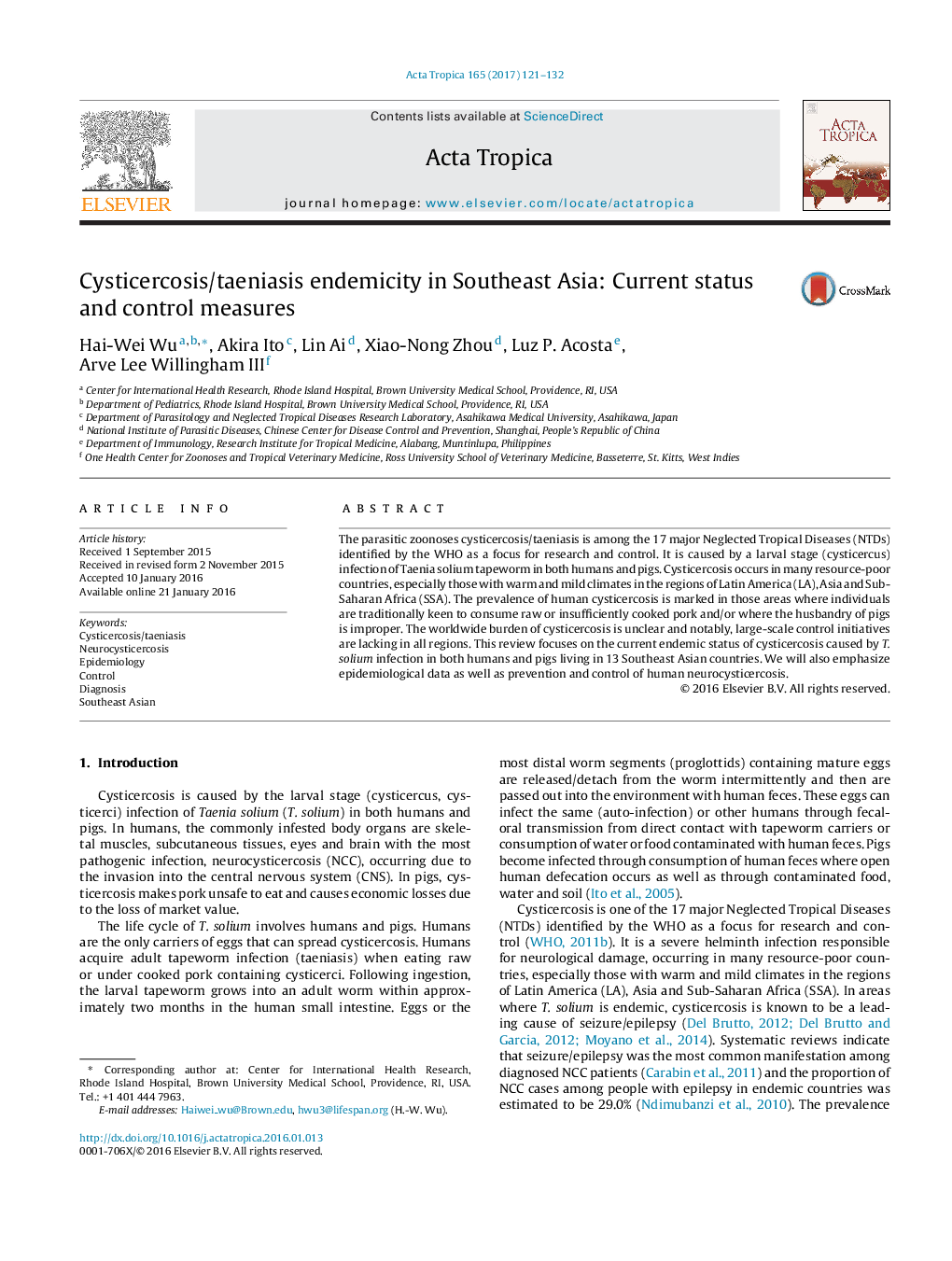| Article ID | Journal | Published Year | Pages | File Type |
|---|---|---|---|---|
| 5670829 | Acta Tropica | 2017 | 12 Pages |
â¢Cysticercosis/taeniasis remains a neglected zoonosis in most Southeast Asia countries.â¢Information about the presence and societal impact of Cysticercosis/taeniasis is lack in the region.â¢We provide here an overview of the disease endemicity mainly based on literatures published after 2009.â¢It is imperative to evaluate current serological tools under multi-central evaluation systems with double-blinded testing.â¢Control programs should be adopted with consideration toward differences in culture, religion, socio-economic status etc.
The parasitic zoonoses cysticercosis/taeniasis is among the 17 major Neglected Tropical Diseases (NTDs) identified by the WHO as a focus for research and control. It is caused by a larval stage (cysticercus) infection of Taenia solium tapeworm in both humans and pigs. Cysticercosis occurs in many resource-poor countries, especially those with warm and mild climates in the regions of Latin America (LA), Asia and Sub-Saharan Africa (SSA). The prevalence of human cysticercosis is marked in those areas where individuals are traditionally keen to consume raw or insufficiently cooked pork and/or where the husbandry of pigs is improper. The worldwide burden of cysticercosis is unclear and notably, large-scale control initiatives are lacking in all regions. This review focuses on the current endemic status of cysticercosis caused by T. solium infection in both humans and pigs living in 13 Southeast Asian countries. We will also emphasize epidemiological data as well as prevention and control of human neurocysticercosis.
Graphical abstractDownload high-res image (112KB)Download full-size image
